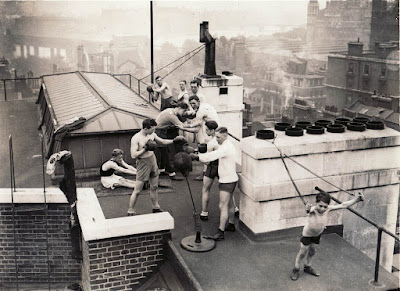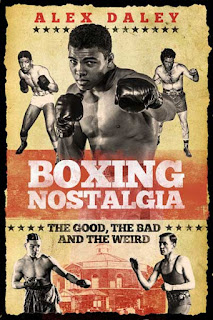There was half-an-hour to kill between train connections at Charing Cross station. It was a sunny September afternoon, so I took a stroll along the Strand. Gazing at the city horizon, my eyes stopped at a tall, imposing building. I’d seen it before but never in living colour. Previously, it had been one dimensional — grey or sepia in the photos I’d seen — but here it was in 3D.
Dyer, who was born in Cardiff to an Irish father and Welsh mother, had been a world-class welterweight. His scalps included the brilliant Panama Joe Gans and future European and British champions Gus Platts and Johnny Basham, yet Fred never won a British or world title himself. He went 20 rounds with the great Australian Les Darcy in 1914 and the following year was stopped in six in a challenge for Darcy’s world middleweight crown (as recognised in Australia), while giving the Aussie nine pounds in weight.
 |
| British flyweight champion Bert Kirby |
Dyer had his last fight in 1922 and around four years later opened his gym on the top floor at 429 Strand, which at the time was the New Zealand Embassy. From here, Dyer trained and managed a small pro stable that included British flyweight champion Bert Kirby and the gifted Bristol lightweight George Rose. The gym also served as a training base for many other fighters, either based in or visiting London.
In 1929, the famous US heavy Young Stribling trained there before his first fight with Primo Carnera. The gym was also used for important weigh-ins, including the Teddy Baldock-Archie Bell world bantam title fight in 1927. Besides training fighters, Dyer also offered health treatments and was clearly broad minded for his time. Two 1920s newsreel clips, available online, show him teaching groups of women to box.
In the summer, the top floor of the building must have felt like a furnace, so Dyer and his charges trained on the roof. The image at the top of this article shows Fred and his boxers on the gym rooftop on a late 1920s summer day. In the picture are his two stars, George Rose and Bert Kirby.
When I saw the building, I thought of gaining access to the roof to take a modern photo from the same angle as this one. But on reflection, I thought better of it. Making this spontaneous request at the Zimbabwean Embassy might not be such a good idea.
 |
| The building as it looks today |
 |
| Inside Dyer's gym |
Article © copyright Alex Daley.
This piece by Alex Daley (first published in Boxing News on 10 August 2017) is one of 132 articles featured in the anthology Boxing Nostalgia: The Good, the Bad and the Weird. You can find our more or buy a copy here.




